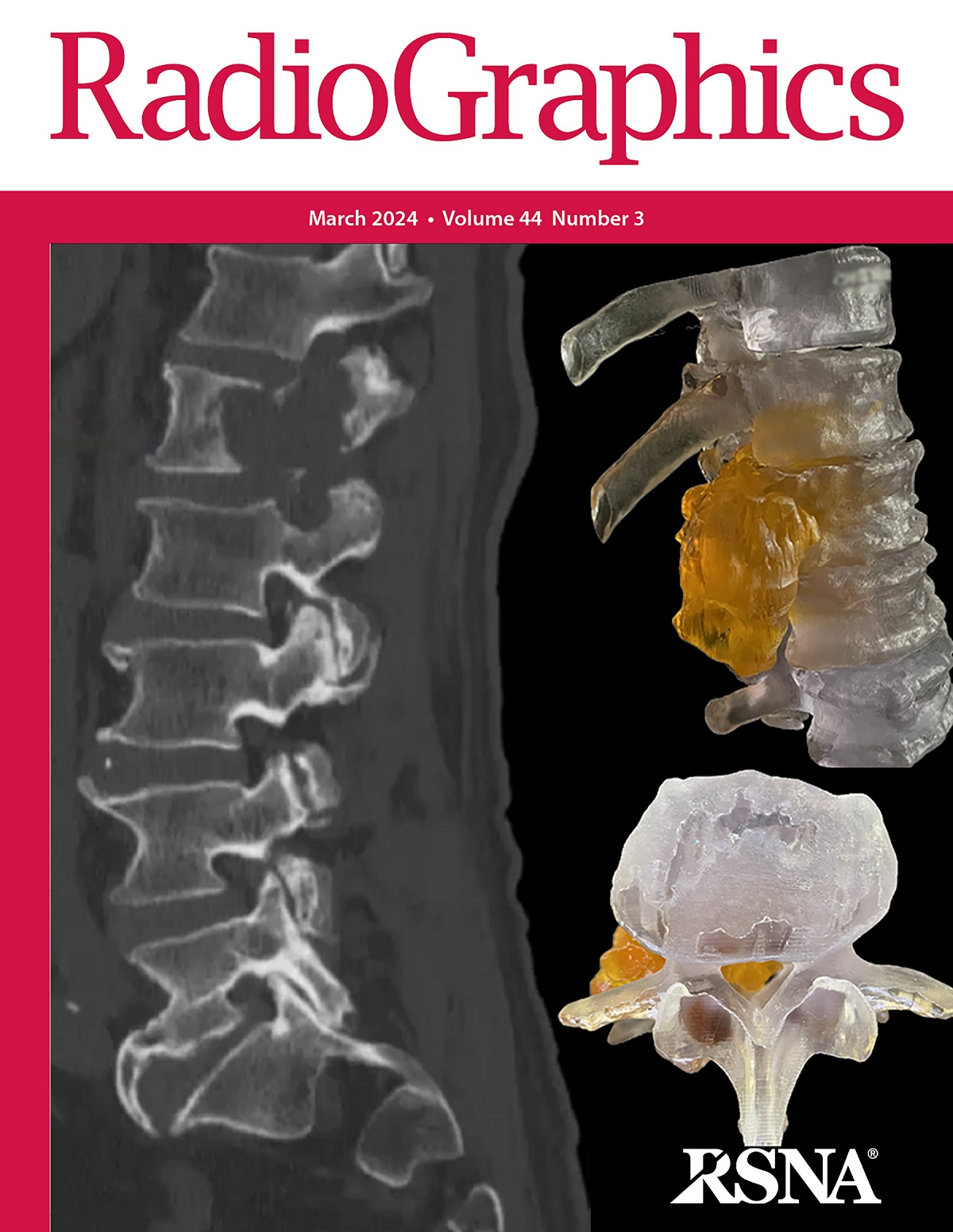求助PDF
{"title":"Spectrum of Heterotopic and Ectopic Splenic Conditions.","authors":"Leslie W Nelson, Scott M Bugenhagen, Meghan G Lubner, Sanjeev Bhalla, Perry J Pickhardt","doi":"10.1148/rg.240004","DOIUrl":null,"url":null,"abstract":"<p><p>A spectrum of heterotopic and ectopic splenic conditions may be encountered in clinical practice as incidental asymptomatic detection or symptomatic diagnosis. The radiologist needs to be aware of these conditions and their imaging characteristics to provide a prompt correct diagnosis and avoid misdiagnosis as neoplasm or lymphadenopathy. Having a strong knowledge base of the embryologic development of the spleen improves understanding of the pathophysiologic basis of these conditions. Spleen-specific imaging techniques-such as technetium 99m (<sup>99m</sup>Tc)-labeled denatured erythrocyte scintigraphy, <sup>99m</sup>Tc-sulfur colloid liver-spleen scintigraphy, and MRI with ferumoxytol intravenous contrast material-can also be used to confirm the presence or absence of splenic tissue. Heterotopic splenic conditions include splenules and splenogonadal fusion (discontinuous or continuous forms). These heterotopic conditions are caused by incomplete fusion of the splenic primordia (splenule) and abnormal fusion of the gonadal and splenic tissue (splenogonadal fusion). Ectopic splenic conditions arise in patients with a prior splenic injury (splenosis), laxity or maldevelopment of the splenic ligaments (wandering spleen), or heterotaxy syndromes (polysplenia and asplenia). Importantly, these heterotopic and ectopic splenic conditions can also manifest with complications, including vascular torsion and rupture. <sup>©</sup>RSNA, 2024.</p>","PeriodicalId":54512,"journal":{"name":"Radiographics","volume":null,"pages":null},"PeriodicalIF":5.2000,"publicationDate":"2024-11-01","publicationTypes":"Journal Article","fieldsOfStudy":null,"isOpenAccess":false,"openAccessPdf":"","citationCount":"0","resultStr":null,"platform":"Semanticscholar","paperid":null,"PeriodicalName":"Radiographics","FirstCategoryId":"3","ListUrlMain":"https://doi.org/10.1148/rg.240004","RegionNum":1,"RegionCategory":"医学","ArticlePicture":[],"TitleCN":null,"AbstractTextCN":null,"PMCID":null,"EPubDate":"","PubModel":"","JCR":"Q1","JCRName":"RADIOLOGY, NUCLEAR MEDICINE & MEDICAL IMAGING","Score":null,"Total":0}
引用次数: 0
引用
批量引用
Abstract
A spectrum of heterotopic and ectopic splenic conditions may be encountered in clinical practice as incidental asymptomatic detection or symptomatic diagnosis. The radiologist needs to be aware of these conditions and their imaging characteristics to provide a prompt correct diagnosis and avoid misdiagnosis as neoplasm or lymphadenopathy. Having a strong knowledge base of the embryologic development of the spleen improves understanding of the pathophysiologic basis of these conditions. Spleen-specific imaging techniques-such as technetium 99m (99m Tc)-labeled denatured erythrocyte scintigraphy, 99m Tc-sulfur colloid liver-spleen scintigraphy, and MRI with ferumoxytol intravenous contrast material-can also be used to confirm the presence or absence of splenic tissue. Heterotopic splenic conditions include splenules and splenogonadal fusion (discontinuous or continuous forms). These heterotopic conditions are caused by incomplete fusion of the splenic primordia (splenule) and abnormal fusion of the gonadal and splenic tissue (splenogonadal fusion). Ectopic splenic conditions arise in patients with a prior splenic injury (splenosis), laxity or maldevelopment of the splenic ligaments (wandering spleen), or heterotaxy syndromes (polysplenia and asplenia). Importantly, these heterotopic and ectopic splenic conditions can also manifest with complications, including vascular torsion and rupture. © RSNA, 2024.
异位和异位脾脏病谱。
在临床实践中,可能会遇到一系列异位和异位脾脏病症,如无症状偶然发现或有症状诊断。放射科医生需要了解这些情况及其影像学特征,以提供及时正确的诊断,避免误诊为肿瘤或淋巴腺病。对脾脏的胚胎发育有深入的了解可提高对这些疾病的病理生理基础的认识。脾脏特异性成像技术,如锝 99m (99mTc) 标记变性红细胞闪烁成像、99mTc 硫胶体肝脾闪烁成像和使用铁氧体静脉注射造影剂的核磁共振成像,也可用于确认脾脏组织的存在与否。异位脾包括脾小泡和脾腺融合(不连续或连续形式)。这些异位情况是由脾原基不完全融合(脾小)和性腺与脾组织异常融合(脾性腺融合)引起的。脾脏异位症发生于脾脏曾受伤(脾肿大)、脾脏韧带松弛或发育不良(游走脾)或异位综合征(多脾和少脾)的患者。重要的是,这些异位和异位脾脏病症还可能出现并发症,包括血管扭转和破裂。©RSNA,2024。
本文章由计算机程序翻译,如有差异,请以英文原文为准。


